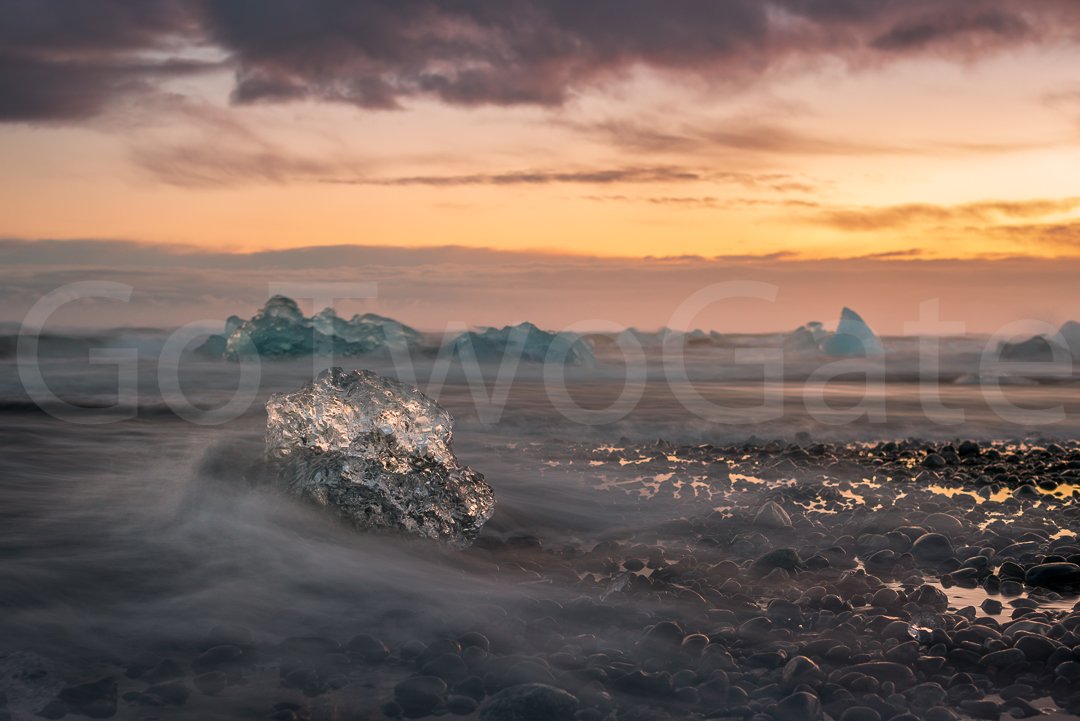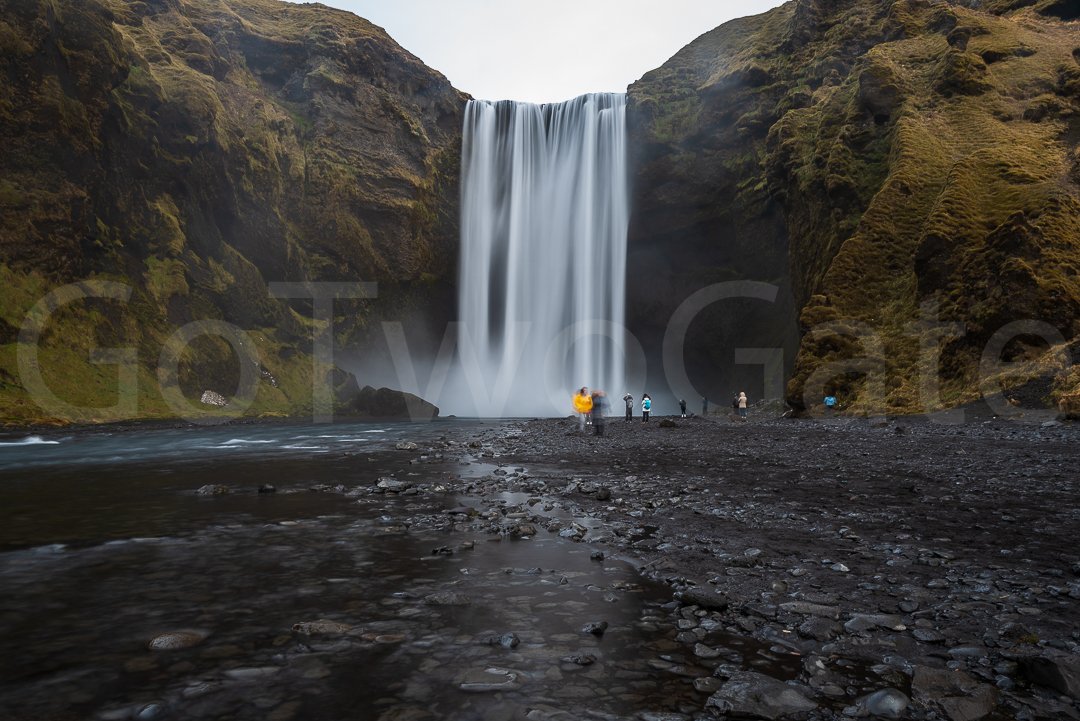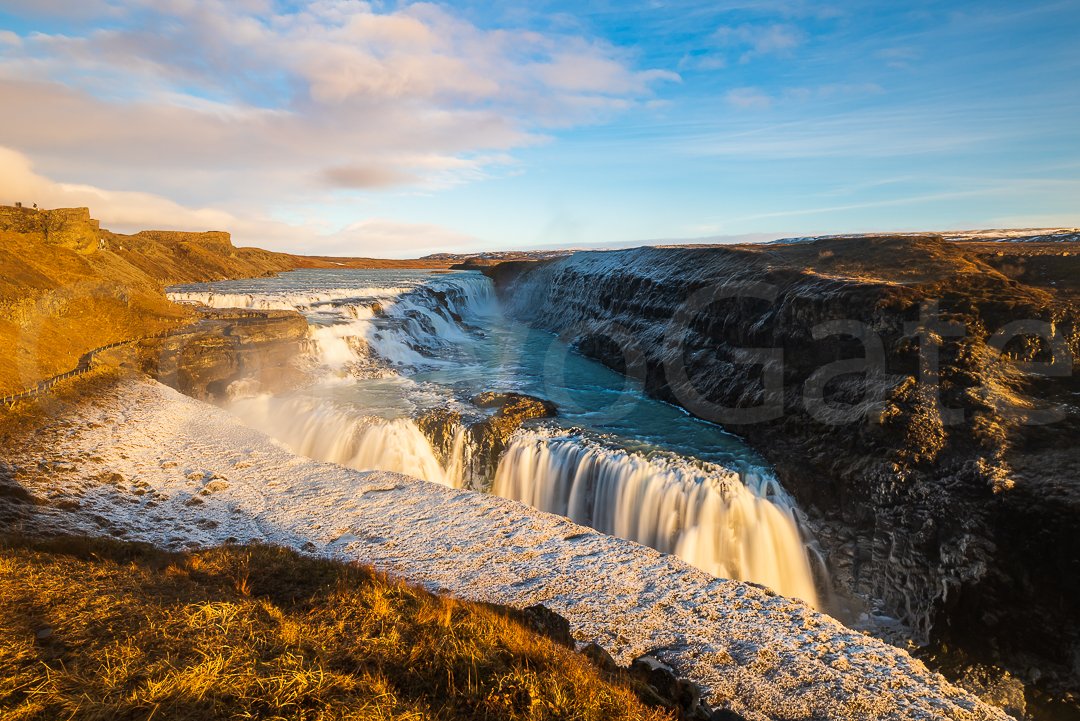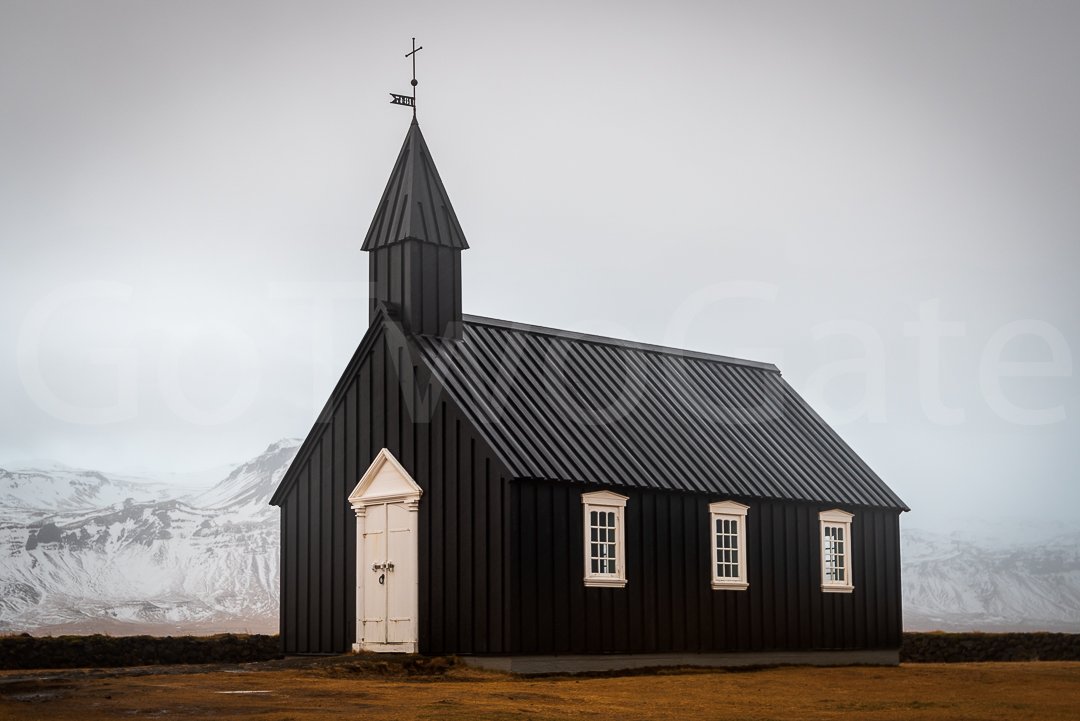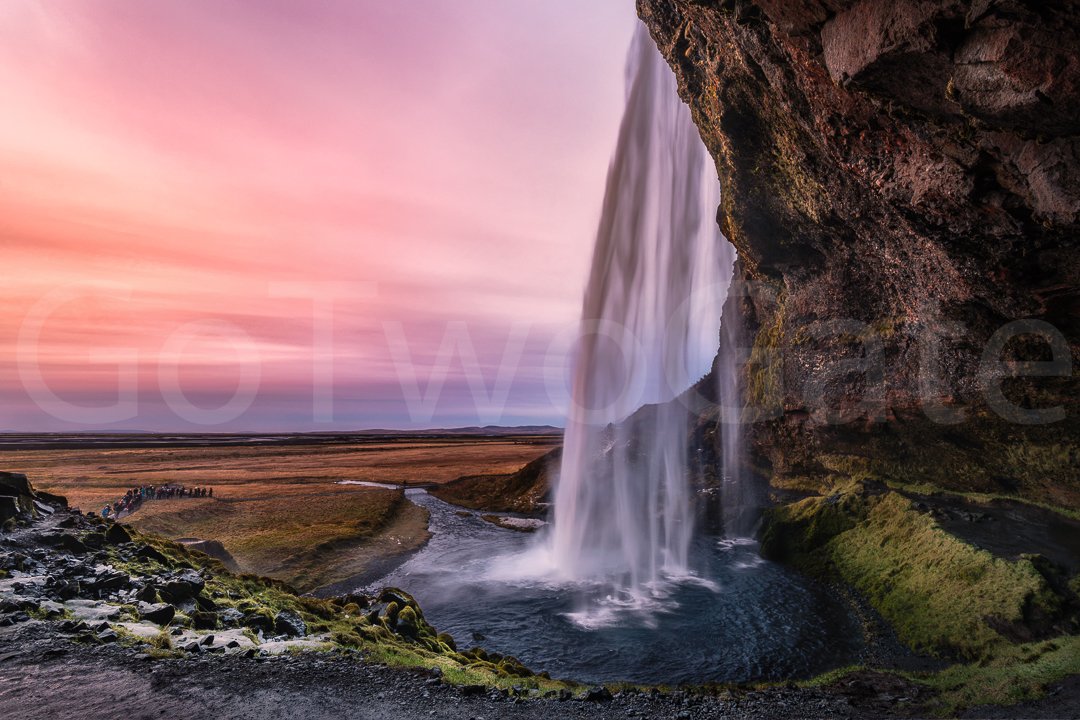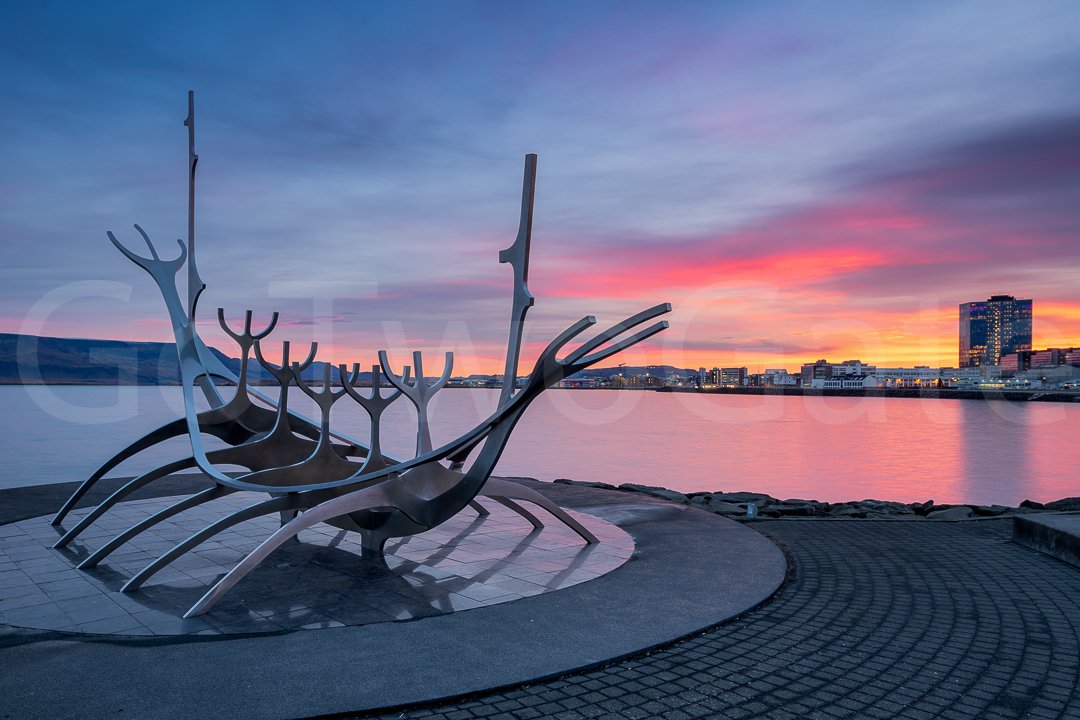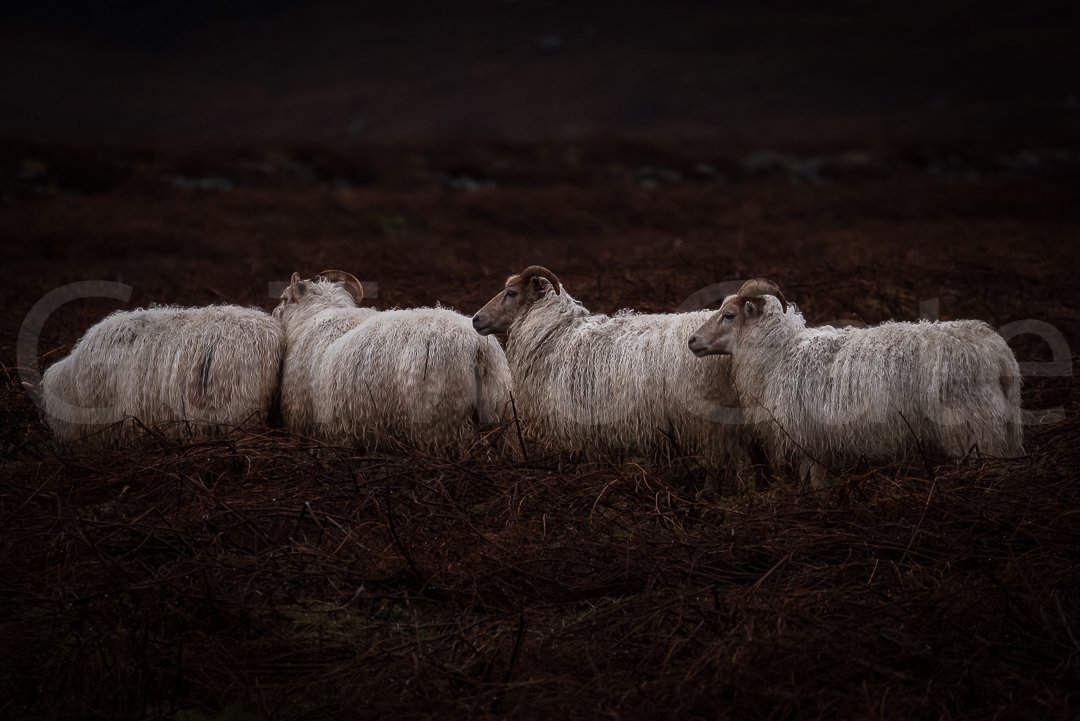Iceland
Best time to travel
Choosing the ideal time to visit Iceland depends on the experiences you crave amid this land of captivating contrasts.
The summer months (june-August) welcome a different side of Iceland. With temperatures ranging from pleasantly cool to mild, this season unveils a world bathed in perpetual daylight. The midnight sun paints the landscapes with an ethereal glow. Roads to the highlands open up, granting access to remote treasures, while vibrant flora blankets the countryside in hues of green.
As autumn sweeps in (Sempember-November), Iceland transforms into a canvas of fiery colors. The landscapes take on a new enchantment as the Northern Lights make their return. The diminishing daylight hours offer a chance for stunning sunrise and sunset vistas, while fewer tourists create a more intimate experience with the natural wonders. We opted for November for our journey, and it was a decision we don't regret.
Winter (December-February) casts an enchanting spell over Iceland. Snow blankets the terrain, transforming it into a winter wonderland. The longer nights increase the chances of witnessing the mesmerizing dance of the Northern Lights.
Spring (March-May) brings a sense of rebirth to Iceland. As the days lengthen, the thawing landscapes come to life, unveiling vibrant greenery and blooming wildflowers. The evenings become the stage for the magical dance of the Northern Lights one last time before the midnight sun takes over.
In the end, the ideal time to explore Iceland depends on individual preferences. Whether chasing the midnight sun, witnessing the dance of the auroras, or experiencing the contrast between icy landscapes and verdant fields, each season in Iceland offers a unique and captivating experience.
How to get there
Iceland, known for its dramatic landscapes and natural wonders, is easily accessible by air from various international destinations. Keflavik International Airport, located about 50 kilometers from Reykjavik, serves as the primary entry point for most travelers arriving in Iceland.
Several major airlines offer direct flights to Keflavik Airport from cities across Europe, North America, and other parts of the world. These flights provide convenient access, making Iceland an enticing destination for global travelers seeking an immersive experience in nature's wonders.
Additionally, domestic flights connect Keflavik Airport with smaller airports across Iceland, facilitating travel to various regions within the country. The island's compact size ensures that most attractions and regions are within relatively accessible distances.
Once on Icelandic soil, various transportation options, including rental cars, buses, and domestic flights, open avenues to explore the diverse landscapes. The well-maintained road network facilitates road trips, allowing travelers to navigate the famed Ring Road or venture into more remote regions.
Where to stay
In Iceland, accommodations aren't just places to rest your head; they're gateways to immersive experiences amidst a landscape that dances between fire and ice.
From boutique hotels in Reykjavik's bustling city center to charming guesthouses tucked away in remote villages, these accommodations offer comfort and often serve as a home base for exploring nearby attractions.
For budget-conscious travelers and those seeking a vibrant social atmosphere, hostels are dotted across the country, offering shared accommodations and a chance to connect with fellow adventurers.
Nestled amidst Iceland's breathtaking landscapes, renting a cottage or cabin presents a serene retreat, allowing travelers to wake up to vistas of cascading waterfalls or volcanic vistas.
For the outdoor enthusiasts, campgrounds provide an opportunity to sleep beneath the midnight sun or the Northern Lights' enchanting glow. Glamping options offer a touch of luxury amidst the wild, with cozy tents and comfortable amenities.
Iceland boasts an array of unique accommodations, including renovated historic buildings, lighthouses perched along the coastline, and even transparent bubble domes allowing for stargazing from the comfort of your bed.
No matter the choice, accommodations in Iceland offer more than just a place to sleep. They immerse travelers in the country's diverse landscapes, making each stay an integral part of the Icelandic adventure.
Selecting accommodations across different Icelandic regions is key to fully experiencing varied landscapes and local cultures.
Best Tourist attractions
Diamond Beach: Where Nature Adorns Itself
Tucked along Iceland's southern coastline, Diamond Beach is a breathtaking spectacle where nature transforms ordinary into extraordinary. Here, the elements conspire to create a stunning juxtaposition of ice and sand, a scene worthy of a fairy tale.
The beach derives its name from the glistening ice sculptures that adorn its black volcanic shores. These icebergs, originating from the nearby Jökulsárlón glacier lagoon, find their way to the sea, where they are sculpted by the waves and the sun's caress, creating a mesmerizing display reminiscent of scattered diamonds across the shore.
Walking along the beach, visitors are greeted by ice formations of various shapes and sizes, glimmering in the sunlight against the dark canvas of the volcanic sand. The contrast between the translucent ice and the stark blackness of the beach creates an ethereal ambiance that is both haunting and captivating.
Photographers find themselves drawn to this natural spectacle, capturing the interplay of light and ice.
For those in search of breathtaking serenity and an encounter with nature's unrefined beauty, Diamond Beach stands as an unforgettable jewel along Iceland's coast.
Svartifoss: Nature's Sculpted Masterpiece
Nestled within Vatnajökull National Park in southeastern Iceland, Svartifoss Waterfall emerges as a mesmerizing masterpiece, a testament to nature's artistry. Its allure lies not just in its cascading waters but in the dramatic backdrop that sets it apart.
Translated as "Black Falls," Svartifoss owes its name to the striking basalt columns that surround it, resembling towering organ pipes. These unique hexagonal columns, formed millennia ago by cooling lava flows, create a stunning contrast against the glistening white waters that tumble gracefully into the pool below.
The journey to Svartifoss is as enchanting as the waterfall itself. A hike through the park's lush trails, flanked by vibrant greenery and stunning vistas, leads adventurers to this natural wonder.
For those seeking an immersive encounter with Iceland's geological wonders and a tranquil retreat into the heart of nature's sculpted elegance, Svartifoss remains an essential gem within Vatnajökull National Park.
Iceland's Lava Landscapes
Iceland's landscapes are a testament to the dramatic forces that have shaped this island nation. Lava, both ancient and recent, blankets the terrain, creating a surreal and captivating canvas that tells tales of fiery eruptions and the raw power of nature.
These lava landscapes, adorned with undulating fields of hardened magma, paint a picture of rugged beauty against a backdrop of contrasting elements. From moss-covered lava fields, where vibrant greenery blankets the blackened earth, to barren stretches of volcanic rock sculpted by millennia-old eruptions, each vista unveils a unique facet of Iceland's geological history.
Despite their stark appearance, these lava landscapes harbor a remarkable resilience, fostering life in unexpected ways. Mosses and lichens find footholds on the hardened lava, adding splashes of greenery to the otherwise austere terrain, showcasing nature's ability to thrive amidst harsh conditions.
Iceland's lava landscapes unfold a tale of ancient fire and timeless beauty, where rugged rocks paint a dramatic masterpiece against the canvas of the North.
Skógafoss: Nature's Majestic Cascade
Tucked amidst Iceland's picturesque southern coast stands Skógafoss, a towering testament to the country's natural splendor. This iconic waterfall, plummeting approximately 60 meters in a single dramatic drop, captivates visitors with its sheer force and breathtaking beauty.
The thundering waters of Skógafoss cascade gracefully over a cliff adorned with lush greenery, creating a mesmerizing mist that blankets the surrounding landscape. Rainbows often dance in the mist, adding a magical touch to the already enchanting scenery.
The allure of Skógafoss extends beyond its sheer size; adventurers can climb the stairs beside the falls for a bird's-eye view of the cascading waters and the sweeping vistas of Iceland's rugged terrain. It’s incredible!
Skógafoss, with its raw power and serene beauty, stands as an iconic symbol of Iceland's untamed landscapes, offering visitors a truly immersive encounter with the country's majestic natural wonders.
Gullfoss: The Golden Waterfall
Nestled within the land of fire and ice, Gullfoss reigns as a crown jewel of Iceland's natural wonders. This majestic waterfall, aptly named "Golden Falls," casts a spellbinding spectacle as it plunges into a rugged canyon.
The Hvítá River takes a thrilling two-tiered tumble, first plummeting down a 11-meter cascade followed by a majestic drop of 21 meters, disappearing into the misty embrace of the canyon depths. The sheer power and thundering roar of Gullfoss create an immersive experience, drawing visitors into its mesmerizing embrace.
Rainbows often weave through the spray on sunny days, casting a kaleidoscopic display across the tumultuous waters, enhancing the allure of this already enchanting panorama.
Standing on the edge of Gullfoss, spectators witness nature's grandeur at its finest, a testament to the raw beauty and unyielding force of Iceland's untamed landscapes.
The day we visited was freezing, but absolutely worth it! And remember your camera – capturing a snapshot at every corner in Iceland is a must-do.
Iceland's Geysers: Nature's Spectacular Performance
Iceland's geysers stand as nature's fiery showstoppers, captivating audiences with their dramatic eruptions. These natural wonders, fueled by the Earth's restless energy, showcase a spectacular display of power and beauty.
Witnessing a geyser in action is like watching a natural symphony. The anticipation builds as bubbling pools of boiling water hint at the impending spectacle. Suddenly, with an explosive release of pressure, a towering column of scalding water and steam erupts into the sky, reaching impressive heights amidst a chorus of hissing and splashing.
We went to the most famous geyser, Strokkur. It had predictable eruptions, showcasing this mesmerizing performance every few minutes. Travelers gathered around, cameras poised, to capture this awe-inspiring moment of nature's raw force.
Surrounded by otherworldly landscapes, these geysers remind us of the planet's untamed power and the mesmerizing dance between the elements that continues to shape Iceland's dramatic terrain.
Visiting these geysers is not merely observing nature; it's experiencing the heartbeat of the Earth, a thrilling encounter with the forces that shape our world.
Búðakirkja: The Black Church of Iceland
Nestled amidst Iceland's rugged landscapes stands Búðakirkja, a striking sight against the stark terrain. This iconic black church, with its solitary presence, captivates visitors with its unique allure and rich historical significance.
Búðakirkja, set against a backdrop of black lava fields, boasts a simple yet captivating architecture that harmonizes with the surrounding landscape. Its distinct dark exterior creates a stark contrast against the snow-capped mountains and expansive vistas.
Its solitary presence against the dramatic Icelandic landscapes makes it a must-see destination for travelers seeking a glimpse into the country's history and unique architectural marvels.
That being said capturing Búðakirkja in photos isn't just a snapshot; it's a black-and-white masterpiece in the colorful story of your Icelandic adventure, so don´t miss it out! 📸🖤
Seljalandsfoss: The Enchanting Curtain of Cascades
Seljalandsfoss, a jewel in Iceland's natural crown, enchants visitors with its ethereal beauty. This majestic waterfall, with its gracefully cascading curtain of water, stands as an iconic testament to the country's natural splendor.
What sets Seljalandsfoss apart is its unique feature – a pathway that allows adventurers to walk behind the veil of falling water, immersing themselves in a truly captivating experience. The sensation of being enveloped by the thundering cascade, while gazing out at the surrounding vistas, is an encounter with nature that provides an immersive experience unlike any other.
As one of Iceland's most renowned waterfalls, Seljalandsfoss beckons adventurers and photographers alike to capture its beauty from every angle. Whether seen from a distance, approached from behind, or admired up close, each perspective unveils a different facet of this mesmerizing natural wonder.
Kirkjufellsfoss: Nature's Crown Jewel at Kirkjufell
Nestled at the foot of the iconic Kirkjufell mountain, Kirkjufellsfoss gracefully enchants visitors with its serene beauty. This picturesque waterfall, set against the backdrop of the majestic Kirkjufell, stands as an emblem of Iceland's scenic splendor.
The cascading waters of Kirkjufellsfoss flow gently, forming a tranquil symphony amidst the dramatic landscapes. The surrounding panorama, with its sweeping vistas of mountains and valleys, creates a serene ambiance that captures the essence of Icelandic tranquility.
Photographers find inspiration in Kirkjufellsfoss, framing the falls against the iconic Kirkjufell mountain, known as "Church Mountain," for its distinctive shape. The harmony of water and nature's grandeur paints an enchanting picture, drawing visitors into a serene realm of beauty.
For those seeking a moment of serenity amidst Iceland's dramatic landscapes or a picture-perfect frame capturing the essence of Icelandic beauty, Kirkjufellsfoss stands as an iconic destination not to be missed.
Solheimasandur Plane Wreck
Nestled within the desolate beauty of Iceland's south coast lies the haunting silhouette of the Solheimasandur Plane Wreck. This eerie yet fascinating site marks the resting place of a US Navy DC-3 aircraft, which crash-landed on the black sands of Solheimasandur in 1973.
To reach the plane wreck, visitors must park their vehicles at the designated parking lot off Route 1 (Ring Road). From there, a roughly 4-kilometer (2.5-mile) walk awaits across the rugged terrain, which could take around 45 minutes to an hour each way. The trail, void of distinct landmarks, leads adventurers through volcanic plains and black sand expanses, offering a surreal experience amidst the stark surroundings.
While the journey to the Solheimasandur Plane Wreck demands a trek across the desolate terrain, the reward is an encounter with an intriguing piece of history set amidst Iceland's hauntingly beautiful surroundings.
Vík í Mýrdal
Nestled along Iceland's south coast, Vík í Mýrdal, commonly known as Vík, stands as a charming village steeped in both natural beauty and folklore. Its iconic black sand beaches and dramatic cliffs are a striking contrast against the roaring waves of the North Atlantic Ocean.
Vík serves as a gateway to captivating natural wonders, including the nearby Reynisfjara Beach, renowned for its black basalt columns and towering sea stacks. These mesmerizing formations, shrouded in myths of ancient trolls and legendary folklore, add an air of mystique to the already enchanting surroundings.
The village itself offers glimpses into Iceland's local culture, with its quaint church sitting atop a hill, offering panoramic views of the coastline and the impressive Reynisdrangar rock formations jutting from the ocean.
Reynisfjara beach
Known for its stark black sands, towering basalt columns, and formidable sea stacks, this otherworldly beach enchants visitors with its raw beauty.
Venturing along Reynisfjara Beach reveals unique rock formations, including the famed hexagonal basalt columns that create a surreal setting. The beach's captivating features, starkly contrasting against the roaring sea, provide endless photographic opportunities and a sense of awe-inspiring wonder. However, this beach holds hidden dangers in its powerful waves and strong currents, urging caution and respect for its unpredictable nature.
Reynisfjara Beach stands as a testament to the raw and untamed beauty that defines Iceland's coastline, inviting travelers to witness a landscape both captivating and formidable.
Jökulsárlón glacier lagoon
Situated at the edge of Vatnajökull National Park, this picturesque lagoon showcases an ethereal display of floating icebergs, sculpted by the elements.
The lagoon, formed from the melting tongues of Breiðamerkurjökull glacier, creates a serene haven where massive ice chunks drift gracefully amidst crystal-clear waters. The kaleidoscope of blues, ranging from translucent to vibrant hues, offers a visual symphony that captivates every visitor.
Jökulsárlón isn't just a spectacle for the eyes; it's a haven for diverse wildlife. Seals bask on the icebergs, while seabirds soar above, adding to the allure of this frozen oasis.
Regardless of the season, Jökulsárlón remains an enchanting destination, etching unforgettable memories against Iceland's scenic canvas.
Chasing the Northern Lights: Nature's Mystical Dance
From the remote corners of the countryside to the edges of vast lava fields, the Northern Lights grace Iceland's horizons, turning nights into mesmerizing visual symphonies. These elusive displays are a testament to nature's artistry, leaving visitors spellbound and seeking the perfect vantage point to witness this breathtaking phenomenon.
Night after night, rain or shine, we diligently sought the elusive Northern Lights, eagerly anticipating that break in the clouds that would unveil the auroras. Moving from place to place, constantly changing our vantage point, we patiently awaited the enchanting dance.
Unexpectedly, there they were, gracefully dancing across the sky when we least expected it. The best performance awaited us at the glacier lagoon. The vivid auroras painted the night sky, creating an unforgettable spectacle, leaving us in awe of nature's stunning artistry.
For those fortunate enough to witness the auroras, it becomes a once-in-a-lifetime experience, a moment when the natural world reveals its most enchanting and captivating side.
Iceland's Gentle Residents and Serene Countryside
Iceland's bucolic landscapes are adorned with tranquil fields where graceful horses and sheep roam freely. The Icelandic horse, with its gentle nature, embodies both strength and grace in Iceland's serene landscapes. Amidst these serene pastures, the gentle presence of the sheep adds to the tranquil ambiance. Their contented grazing amongst the breathtaking scenery illustrates the peacefulness of rural Iceland.
Together, these animals harmonize with the quietude of the countryside, painting a picture of harmony and tranquility against the stunning backdrop of Iceland's untouched landscapes.
As you traverse the quiet countryside, the tranquility is palpable. The soft rustle of grass, the occasional clip-clop of hooves, and the distant calls of sheep create a melody that resonates with the untouched beauty of Iceland's rural life. It's a tranquil escape, where the simplicity of nature intertwines with the unhurried pace of these gentle animals, inviting visitors to experience a profound connection with the land.
Reykjavik
Nestled along Iceland's southwestern coast, Reykjavik, the world's northernmost capital, exudes a charming fusion of rich cultural heritage and modern flair. Despite its modest size, the city pulsates with an energetic vibe, offering a blend of cultural treasures and vibrant urban life.
Reykjavik's distinctive architecture, from the iconic Hallgrímskirkja church's towering spire to the colorful houses adorning its streets, creates an inviting and picturesque setting for exploration. Stroll through its bustling streets lined with boutique shops, cozy cafés, and a myriad of art galleries, reflecting the city's creative spirit.
Reykjavik's proximity to stunning natural wonders is another highlight. The city serves as an ideal hub for day trips to nearby geothermal spas, majestic waterfalls, and the awe-inspiring landscapes of the Golden Circle.
The duration of your visit to Reykjavik should align with your interests and the activities you wish to experience. For a basic exploration of the city itself, a minimum of 2 to 3 days can provide ample time to visit its main attractions, museums, and immerse in its cultural offerings.
In essence, Reykjavik, with its blend of modernity and Icelandic charm, invites travelers to discover the heart and soul of Iceland in its own unique way.
Exploring Iceland: Uncharted Territories Await
During our Icelandic adventure, we found ourselves captivated by the enchanting sights and experiences of our itinerary. However, the vastness of this wondrous land held more treasures than we could uncover in one journey. Regrettably, some iconic landmarks remained unchecked on our itinerary, destined for a future visit to Iceland.
Due to the constraints of time, several remarkable sites such as Vestrahorn, Dettifoss, Halldórsskora, and the renowned Blue Lagoon remained on our list of must-see places for a future Icelandic adventure.
Despite these missed opportunities, the sights we did lay eyes on were nothing short of extraordinary, offering a glimpse into Iceland's remarkable beauty. The allure of these untouched landmarks only adds to our eagerness to return, promising an even more comprehensive exploration of Iceland's diverse and captivating landscapes.
Discovering Iceland: Essential Tips for a Fulfilling Adventure
Embrace the Seasons: Iceland's beauty transcends every season. Whether you seek the endless daylight of summer or the enchanting dance of Northern Lights in winter, each season offers a unique and captivating experience.
Explore Beyond Reykjavik: While Reykjavik is vibrant and captivating, venture beyond the city limits to discover Iceland's diverse landscapes, from cascading waterfalls and volcanic terrains to tranquil fjords and quaint villages.
Pack Layers: Icelandic weather can be unpredictable. Layer clothing to prepare for sudden changes, ensuring you're ready for everything from mild sunny days to brisk winds and rain.
Stay Flexible: Iceland's weather is ever-changing. Keep your itinerary flexible to adapt to weather conditions for the best experiences. If one spot is cloudy, another might reveal a sunny vista.
Rent a Car: To fully explore the island's wonders, consider renting a car. This provides the freedom to meander off the beaten path and discover hidden gems along Iceland's breathtaking routes.
Respect Nature and Wildlife: Iceland's landscapes are fragile, and its wildlife is precious. Respect nature's sanctity by sticking to marked trails, keeping a safe distance from wildlife, and following responsible tourism practices.
Seek Local Experiences: Engage with locals to understand Iceland's rich culture and heritage. Try local cuisine, attend cultural events, and embrace the warmth of Icelandic hospitality.
Stay Safe: Prioritize safety during outdoor adventures. Keep an eye on weather forecasts, follow safety guidelines for hiking and driving, and inform someone of your travel plans, especially for remote areas.
Capture Moments: Iceland's beauty is indescribable; capture memories through photography. Documenting your experiences ensures these moments remain etched in your heart.
By embracing these tips, you'll unlock the full spectrum of Iceland's wonders, creating an enriching journey filled with captivating landscapes, cultural encounters, and unforgettable moments.
"Subscribe to our site for a first-class ticket to all the latest travel tales and captivating adventures!"
Attention: All information presented here was correct at the time of our travel. Therefore, we advise you to check whether they remain unchanged.


